Lenormand Card Meanings Complete Guide
All 36 cards explained with keywords, symbolism & interpretations
Your Journey into Lenormand Begins Here
Whether you just picked up your first Lenormand deck or you're a tarot reader curious about this sister system, you're in the right place. This guide covers everything from the basics to techniques that take years to master. Bookmark this page — you'll come back to it often.
The Legend of Madame Lenormand
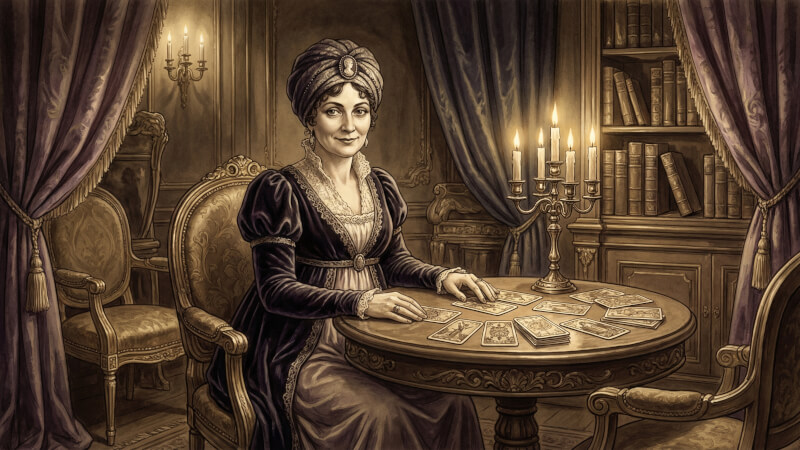
Marie Anne Lenormand (1772-1843) was the most famous fortune-teller in European history. Operating from her salon on Rue de Tournon in Paris, she read cards for some of the most powerful figures of her era — including Empress Joséphine, Napoleon's first wife.
The story goes that Lenormand predicted Napoleon's rise to power, his eventual downfall, and Joséphine's own fate with remarkable accuracy. Whether legend or truth, her reputation was so formidable that she was arrested multiple times for her influence over political figures.
The 36-card deck we use today wasn't actually created by Lenormand herself — it was developed after her death by publishers capitalizing on her fame. But the system has proven itself over nearly two centuries of practice, becoming the dominant form of cartomancy across Continental Europe.
Lenormand vs Tarot: Key Differences

If you're coming from tarot, you'll need to unlearn a few habits. Lenormand operates on completely different principles:
Cards combine, not stand alone
In tarot, each card tells its own story. In Lenormand, a single card means almost nothing — it's a word, not a sentence. You always read cards in combination with their neighbors.
Meanings are literal
Tarot deals in archetypes and psychological states. Lenormand is blunt and practical. The Letter card often means an actual letter, email, or document. The Dog usually represents a real friend, not abstract loyalty.
No reversals
Lenormand cards don't use reversed meanings. Positive and negative interpretations are built into the card combinations — a positive card next to Clouds or Coffin takes on a darker tone.
Focus on the concrete
Tarot asks 'why' — the psychological and spiritual dimensions. Lenormand asks 'what, when, and how' — the practical details of everyday life.
All 36 Lenormand Card Meanings
Every Lenormand card carries a core meaning that stays consistent across readings. The trick is learning how these meanings shift when combined with other cards. Below is each card with its essential keywords and what it typically represents.
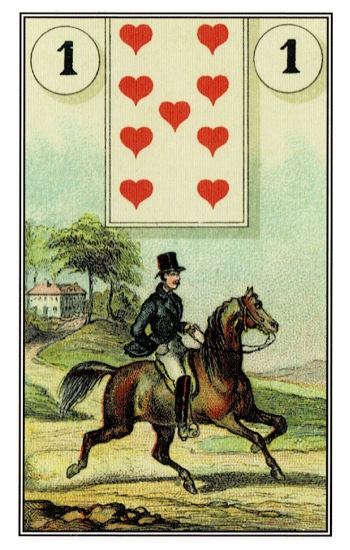
Rider
News, Messages, Visitor, Speed, Young man
Something is coming your way — a message, visitor, or new development. This card brings movement and often indicates things happening quickly.
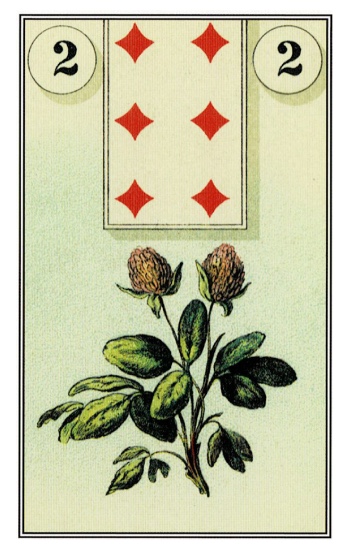
Clover
Luck, Opportunity, Small joy, Quick fix
A stroke of good fortune, though usually small or temporary. Think of finding a parking spot, not winning the lottery.
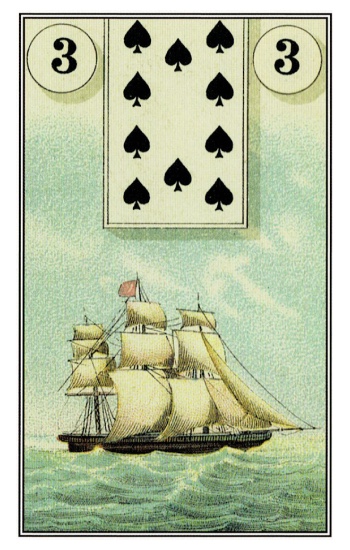
Ship
Travel, Journey, Commerce, Distance, Longing
Movement over distance — physical travel, business ventures, or something/someone far away. Also represents trade and foreign connections.
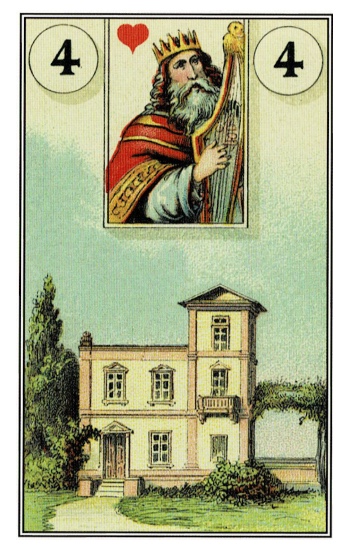
House
Home, Family, Property, Stability, Tradition
Your home environment, family matters, real estate, or anything providing stability and security. The foundation of your life.
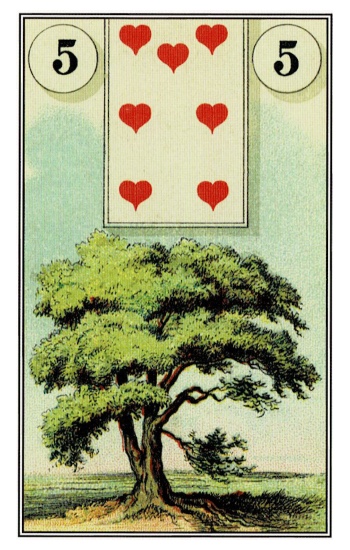
Tree
Health, Growth, Roots, Life path, Boredom
Long-term health matters, spiritual growth, or deep-rooted situations. Tree moves slowly — expect gradual development, not sudden change.
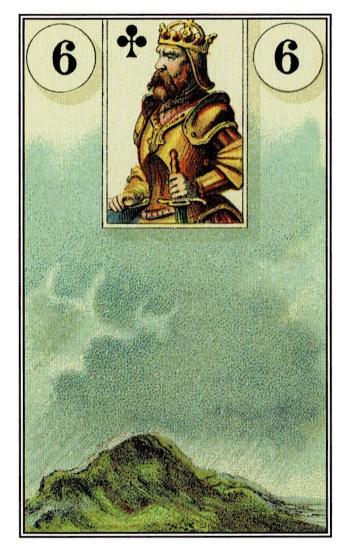
Clouds
Confusion, Doubt, Hidden, Unclear, Trouble
Something isn't clear. There's confusion, doubt, or hidden information. Watch which direction the dark side faces — it shows where trouble comes from.
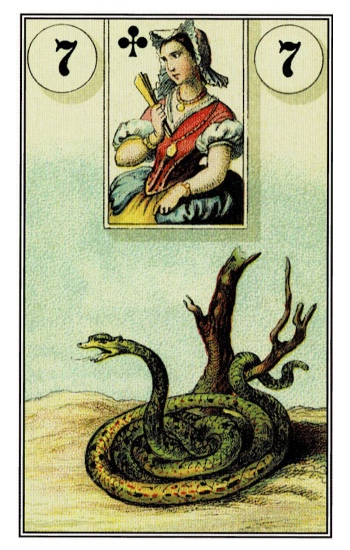
Snake
Complications, Detours, Rival woman, Wisdom, Deception
A winding path — complications, betrayal, or a complicated person (often another woman). Can also indicate wisdom gained through difficulty.
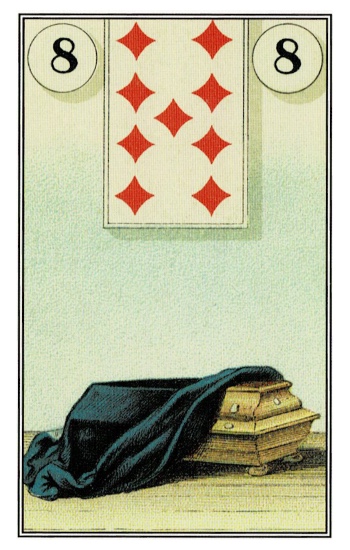
Coffin
Ending, Transformation, Illness, Grief
Something ends. It might be painful, but endings create space for new beginnings. Can indicate illness or depression when combined with health cards.
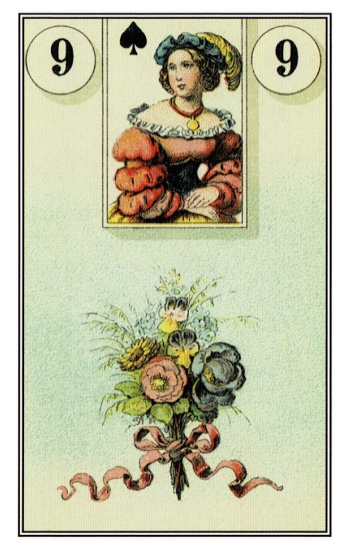
Bouquet
Gift, Invitation, Happiness, Beauty, Appreciation
Something pleasant coming your way — a gift, compliment, invitation, or simple kindness. Beautifies whatever card it touches.
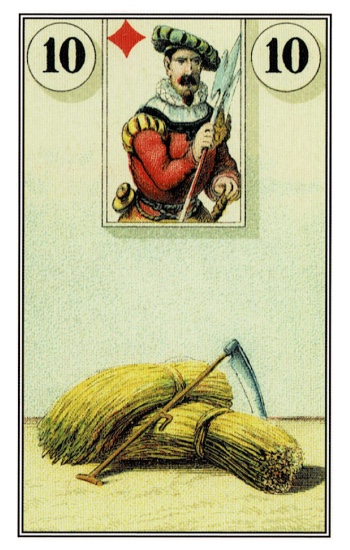
Scythe
Sudden end, Danger, Decision, Harvest, Cut
Swift, decisive action — usually cutting something off. The blade direction matters: it "cuts" whatever card it points toward.
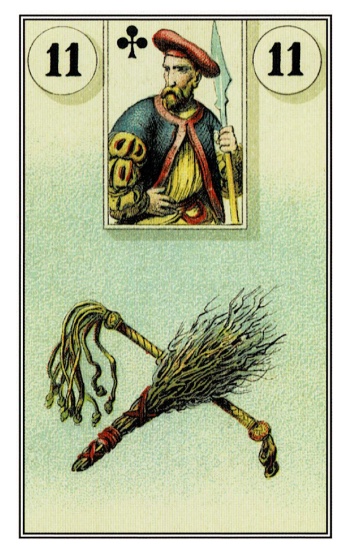
Whip
Conflict, Arguments, Repetition, Physical activity, Passion
Strife and arguments, but also repetitive actions and physical exertion. Can indicate passionate encounters or ongoing disputes.
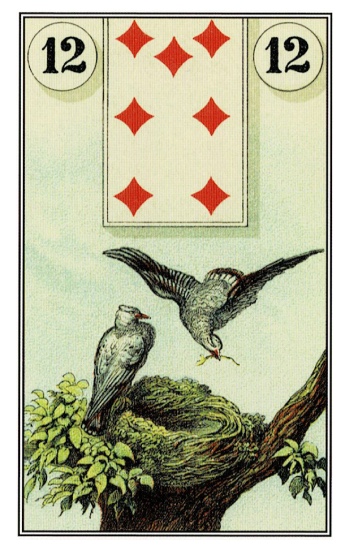
Birds
Conversations, Gossip, Anxiety, Couple, Phone calls
Communication — usually verbal. Chatter, gossip, phone calls, or worried thoughts. Often represents a couple or pair of anything.
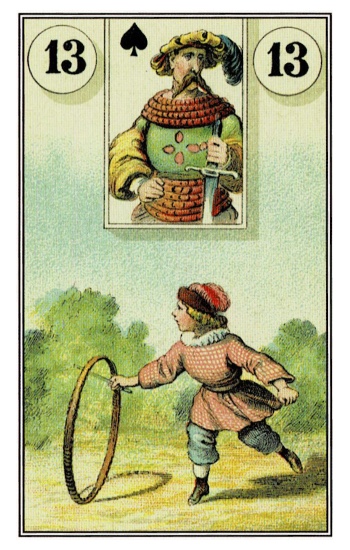
Child
New beginning, Innocence, Small, Young person
Something new and young — a fresh start, actual child, or something in early stages. Also makes things "smaller" when combined with other cards.
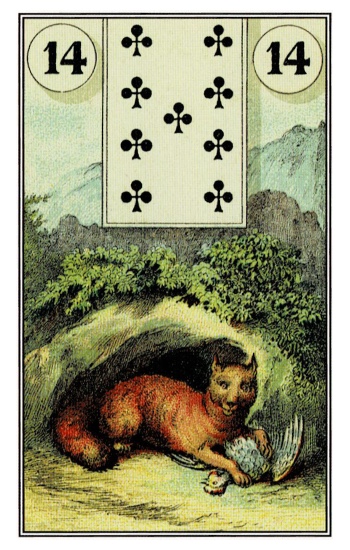
Fox
Cunning, Employment, Self-interest, Caution, Deception
Be careful — something isn't what it seems. Often relates to work, employment, or someone acting in self-interest. Use your street smarts.
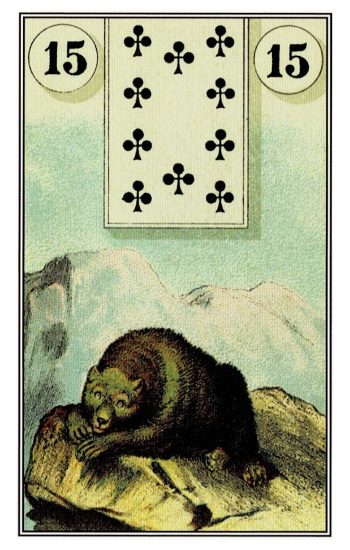
Bear
Power, Boss, Mother figure, Strength, Finances
Authority and strength — a boss, mother figure, or powerful person. Also connects to financial matters and official resources.
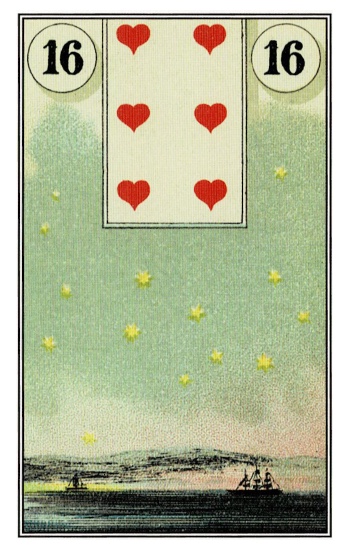
Stars
Hope, Guidance, Success, Clarity, Technology
Navigation and inspiration — finding your direction, achieving success, or gaining clarity. Modern readings often link it to technology and the internet.

Stork
Change, Relocation, Improvement, Pregnancy, Promotion
Positive change is coming — often a move, upgrade, or improvement. Traditionally connected to pregnancy and bringing new life into situations.
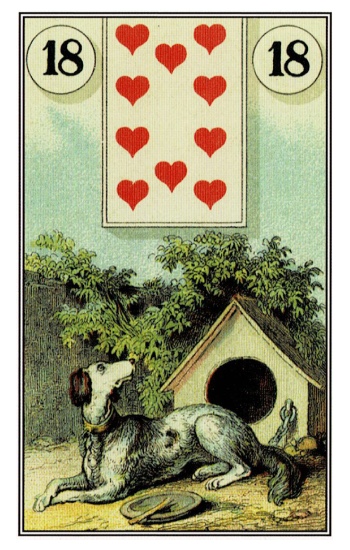
Dog
Friend, Loyalty, Support, Trust, Pet
A loyal friend or supportive person in your life. Can literally indicate a pet or service animal. Reliability you can count on.
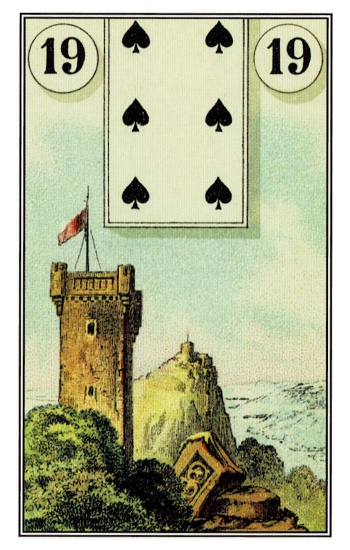
Tower
Institution, Authority, Solitude, Government, Ego
Large institutions — corporations, government, hospitals, schools. Also represents isolation, boundaries, and sometimes ego or ambition.
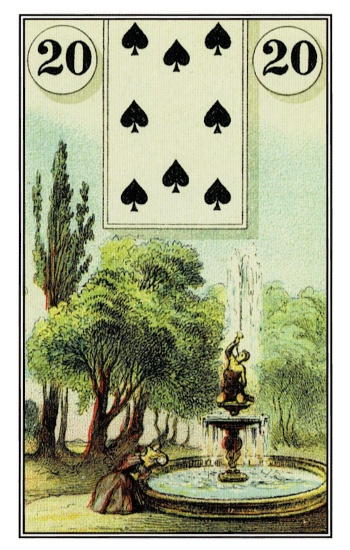
Garden
Social life, Public, Events, Networking, Reputation
The public sphere — parties, social media, networking events, or your reputation. Anything involving groups of people or public appearance.
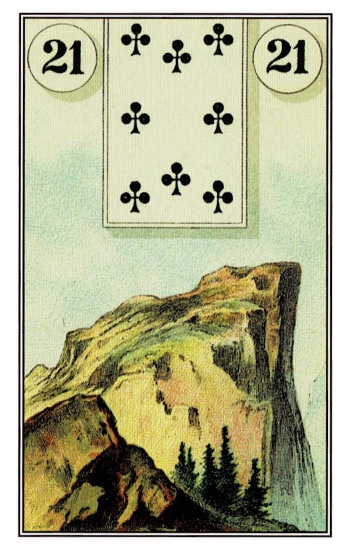
Mountain
Obstacle, Delay, Blockage, Challenge, Enemy
Something stands in your way. A delay, obstacle, or person blocking progress. Can represent a literal mountain or stubbornness.
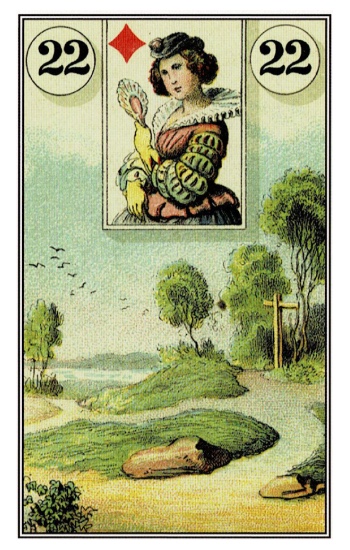
Crossroads
Choices, Options, Freedom, Multiple paths, Decisions
A choice must be made. Multiple options spread before you. Can indicate actual roads, driving, or any branching of possibilities.
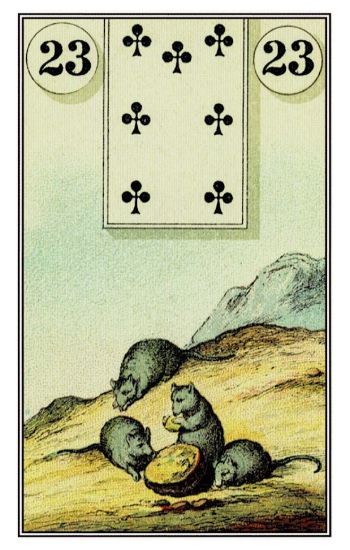
Mice
Loss, Stress, Theft, Anxiety, Decay
Something is being eaten away — resources, health, peace of mind. Gradual loss and persistent stress. The nibbling worry that won't quit.
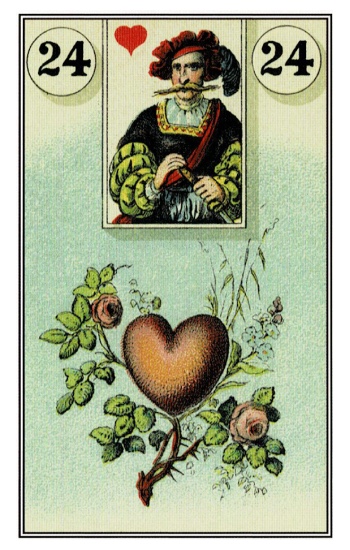
Heart
Love, Romance, Passion, Core desire, Emotional center
Love in all its forms — romantic feelings, passion, or what you truly care about. The emotional heart of any matter.
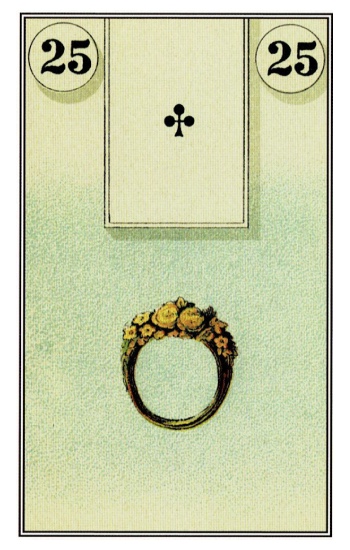
Ring
Commitment, Contract, Partnership, Cycle, Marriage
Binding agreements — marriage, contracts, or committed partnerships. Also represents cycles and things that come back around.
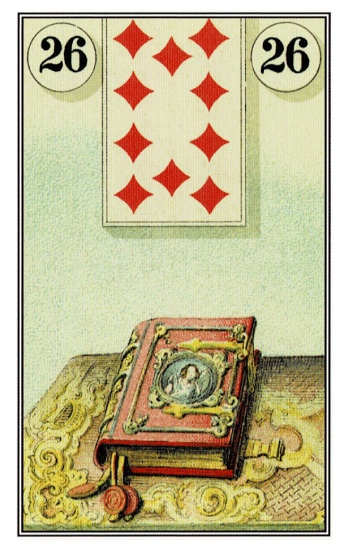
Book
Secrets, Education, Knowledge, Unknown, Research
Hidden information or the pursuit of knowledge. Can indicate actual books, studies, or secrets yet to be revealed.
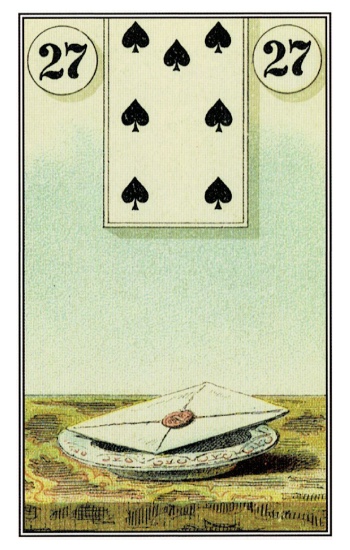
Letter
Documents, Messages, News, Written communication
Written communication — emails, texts, letters, contracts, certificates. The physical paper trail of any matter.
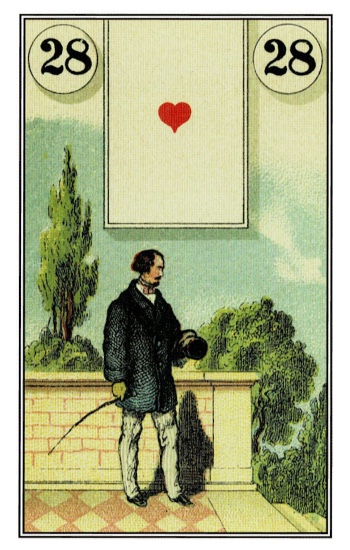
Man
Male querent, Significant man, Masculine energy
If you identify as male, this is you. Otherwise, it represents an important man in the situation — partner, father, colleague, or rival.
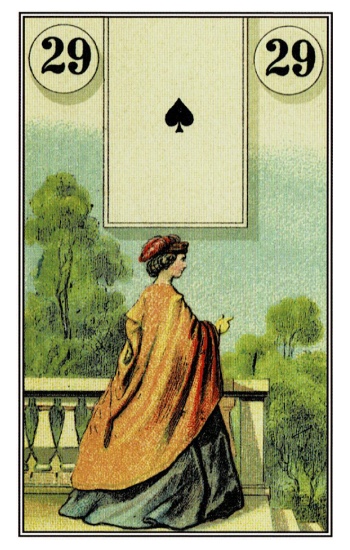
Woman
Female querent, Significant woman, Feminine energy
If you identify as female, this is you. Otherwise, it represents an important woman in the situation — partner, mother, colleague, or rival.
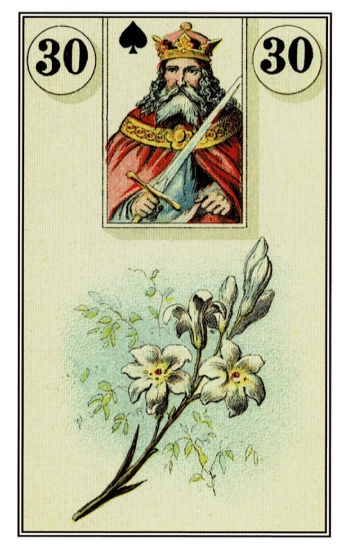
Lily
Peace, Maturity, Sensuality, Elder, Harmony
Peace and wisdom that comes with age. Can indicate an older person, sexual matters, or situations requiring patience and maturity.
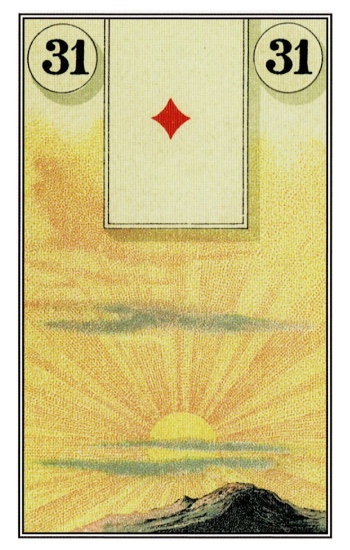
Sun
Success, Happiness, Energy, Victory, Clarity
The best card in the deck. Success, achievement, happiness, and positive energy. Brightens everything it touches.
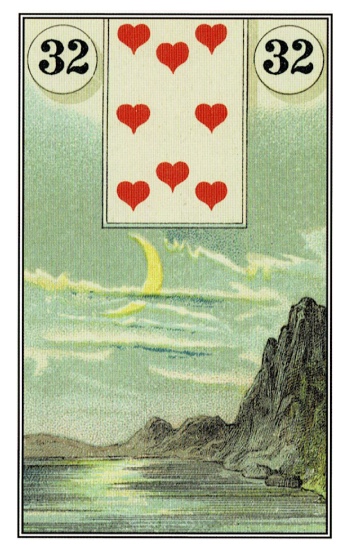
Moon
Emotions, Intuition, Recognition, Fame, Evening
Deep emotions and intuitive knowing. Public recognition and fame. Also connects to evening hours and monthly cycles.
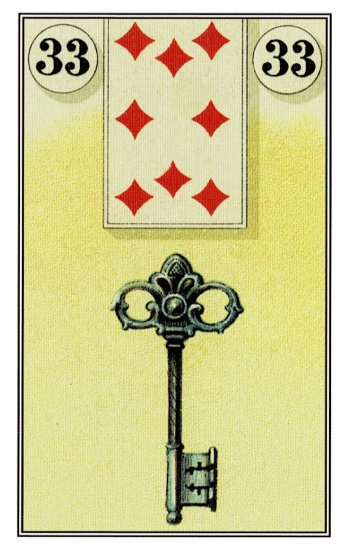
Key
Solution, Certainty, Important, Unlocking, Yes
The answer or solution you're seeking. When Key appears, pay attention — it unlocks whatever cards surround it. Strong 'yes' indicator.
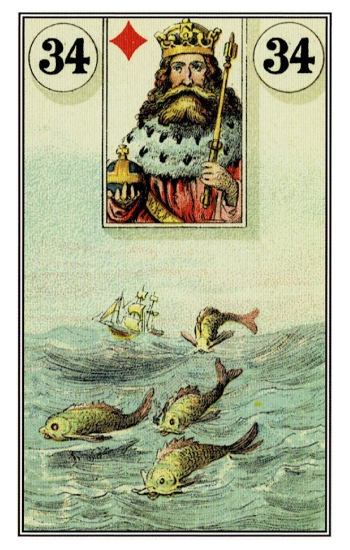
Fish
Money, Business, Independence, Abundance, Alcohol
Financial matters — income, business deals, material resources. Also represents independence and, literally, water and alcohol.
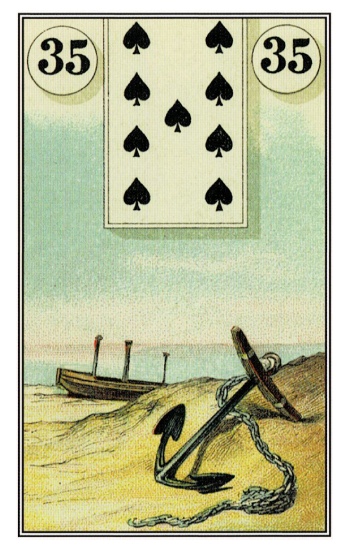
Anchor
Stability, Work, Perseverance, Goal achieved, Long-term
Stability and staying power. Often represents your job or career. When something reaches the Anchor, it's here to stay.

Cross
Burden, Fate, Religion, Suffering, Karma
The weight you carry. Burden, obligation, or suffering that feels fated. Can indicate religious matters or karmic lessons.
How to Read Card Combinations

This is where Lenormand truly differs from other systems. Single cards are just vocabulary — combinations create meaning. Think of it like language: knowing words isn't enough; you need to know how to put them into sentences.
The Basic Grammar
Noun + Adjective Pattern
The first card is usually the subject (noun), and the second card modifies it (adjective). Dog + Heart = A loving friend. Heart + Dog = A friendly love.
Reading Direction
Most readers interpret left to right for past-to-future flow. But in larger spreads, cards above, below, and diagonal all influence each other.
Negative Cards Modify Meaning
Coffin, Clouds, Mountain, Mice, Whip, Cross, and Snake generally darken whatever they touch. Sun + Clouds = happiness that's confused or temporary.
Combination Examples
Ship + House
Moving house, travel for family, family business, or longing for home
Fox + Garden
Workplace social event, deception in public, networking with caution, or a cunning public image
Ring + Coffin
End of a contract, relationship ending, or a commitment that transforms
Letter + Birds
Nervous message, phone call, anxious news, or written gossip
How to Practice
Draw two cards daily and write down your interpretation before anything happens. Check back at day's end. This builds your intuition faster than any book.
Lenormand Spreads: From Simple to Complex
Start with smaller spreads and work your way up. Each layout has its purpose — matching the right spread to your question matters as much as the cards themselves.
3-Card Spread (Line of Three)
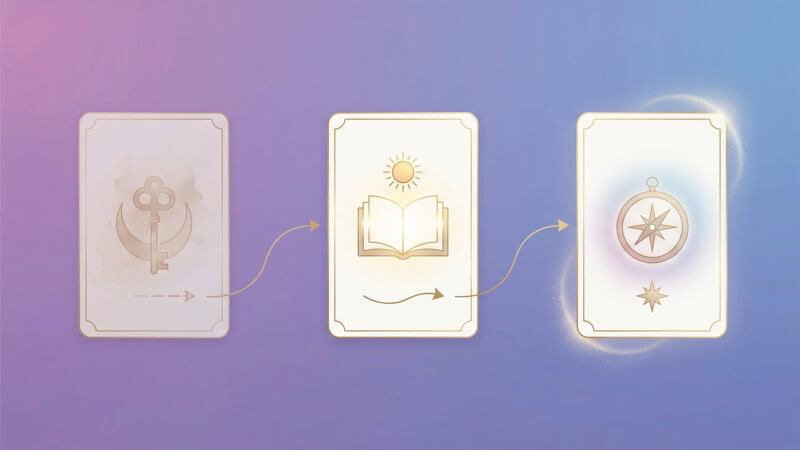
The foundation of all Lenormand reading. Three cards in a row, read as a sentence. This is where you'll spend most of your practice time.
How to Read
- Draw three cards and lay them left to right
- The center card is the core topic
- Read cards 1+2 as one phrase, then cards 2+3 as another
- Combine both phrases into a single story
Example Reading
Bear + Letter + Mice
An official document (Bear + Letter) causes stress or loss (Letter + Mice). Perhaps a bill arrives, or paperwork from a boss brings worry.
5-Card Cross Spread
When you need more context than three cards provide but don't want a full tableau. The cross shape adds vertical dimension — what helps and what challenges.
- •Center: The core issue
- •Left: What's behind (past/known)
- •Right: What's ahead (future/developing)
- •Above: What helps or conscious factors
- •Below: What challenges or hidden factors
9-Card Spread (Box or Portrait)
The workhorse spread for serious questions. Nine cards in a 3x3 grid create a portrait of your situation with remarkable detail.
Reading the Grid
- •Position 5 (center) is the heart of the matter
- •Top row: What's completing or above the surface
- •Middle row: Current situation and immediate influences
- •Bottom row: What's developing or beneath the surface
- •Read rows horizontally, columns vertically, and diagonals for hidden connections
Advanced Technique: Knighting
Read cards in L-shapes like a chess knight moves. From the center, knight to each corner for additional insight. This technique reveals connections that linear reading misses.
Grand Tableau: The Full 36
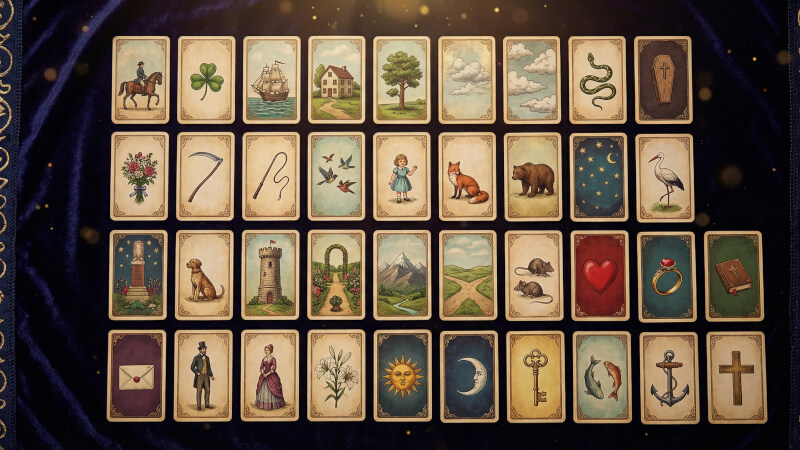
The ultimate Lenormand spread. All 36 cards laid out in a grid, creating a complete map of your life. This is traditionally used for yearly forecasts or major life reviews.
Layout Options
- • 4 rows of 9 cards (36 total)
- • 4 rows of 8 cards + 4 fate cards below
Key Reading Elements
- •Find your significator (Man or Woman card) — everything is read relative to this position
- •Cards to the left of your significator = past; cards to the right = future
- •Cards above = conscious; cards below = unconscious or hidden
- •Distance from significator indicates timing and relevance
- •House positions add another layer — each position carries the meaning of its corresponding card
Timing in Lenormand
One of Lenormand's strengths is predicting when things happen. Different cards carry different timing signatures:
Fast (Days to Weeks)
Rider, Scythe, Whip, Birds
Medium (Weeks to Months)
Ship, Stork, Crossroads, Letter
Slow (Months to Years)
Tree, Mountain, Anchor, Tower
When someone asks 'when?', look at the speed cards near the topic cards for your estimate.
Asking the Right Questions
Lenormand gives direct answers to direct questions. Vague questions get vague readings.
Good Questions
- ✓ What will happen if I take this job offer?
- ✓ What's blocking my relationship from moving forward?
- ✓ How will my financial situation develop over the next three months?
Questions to Avoid
- ✗ What should I do? (Lenormand describes, doesn't prescribe)
- ✗ Am I making the right choice? (Too abstract)
- ✗ Tell me everything about my life (Too broad for anything except Grand Tableau)
Tips from Experienced Readers
These insights take years to learn the hard way. Save yourself the trouble:
- 1Trust your first impression. The meaning that flashes into your mind before analysis is often correct.
- 2Context shapes everything. Fish next to Bear means something different in a love reading versus a career reading.
- 3Practice with verifiable questions. 'What will I receive in the mail this week?' teaches faster than 'What is my soul's purpose?'
- 4Keep a reading journal. Write predictions, check outcomes, note patterns. This is how you develop accuracy.
- 5Don't over-shuffle. Some readers only shuffle until a card falls out, or shuffle exactly 7 times. Find your method.
- 6Negative cards aren't always bad. Coffin can mean transformation, Scythe can mean decisive action, Mountain can mean protection.
Ready to Practice?
The best way to learn Lenormand is to read — regularly and for real questions. Start with our free tools: